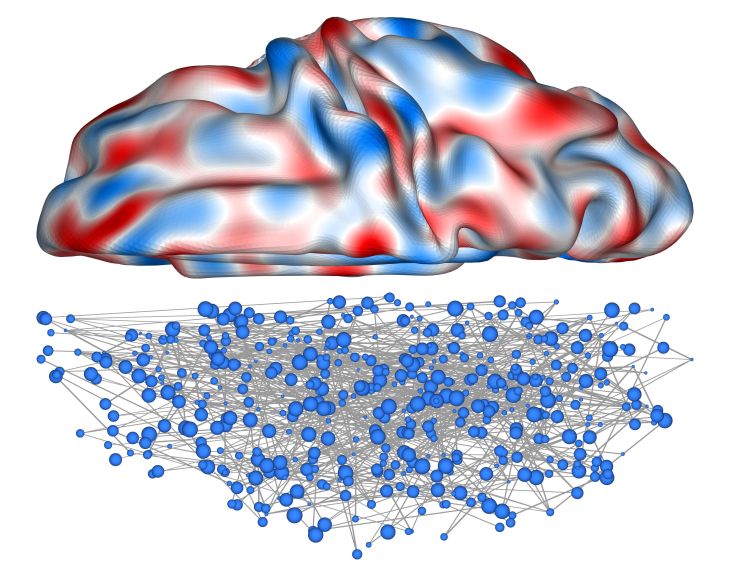
Professor Alex Fornito and Dr James Pang from Monash University.
The research team used magnetic resonance imaging (MRI) to study eigenmodes, which are the natural patterns of vibration or excitation in a system, where different parts of the system are all excited at the same frequency. Eigenmodes are normally used to study physical systems in areas such as physics and engineering and have only recently been adapted to study the brain.
The team compared how well eigenmodes obtained from models of the shape of the brain could account for different patterns of activity when compared to eigenmodes obtained from models of brain connectivity.
“We found that eigenmodes defined by brain geometry – its contours and curvature – represented the strongest anatomical constraint on brain function, much like the shape of a drum influences the sounds it can make,” Professor Fornito said.
“Using mathematical models, we confirmed theoretical predictions that the close link between geometry and function is driven by wave-like activity propagating throughout the brain, just as the shape of a pond influences the wave ripples that are formed by a falling pebble,” he said.
“These findings raise the possibility of predicting the function of the brain directly from its shape, opening new avenues for exploring how the brain contributes to individual differences in behaviour and risk for psychiatric and neurological diseases.”
The theoretical foundations for this experimental research were developed over decades in the School of Physics at the University of Sydney in work led by Professor Peter Robinson.
Dr Ben Fulcher, who leads the Dynamics and Neural Systems Group in the School of Physics and co-author on the paper, said: “This work underscores the importance of collaboration across scientific disciplines – in this case between physics and neuroscience.







